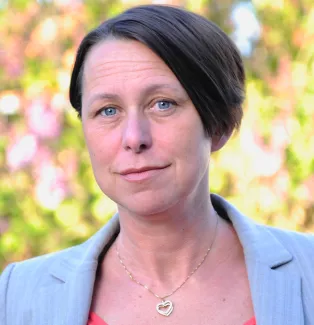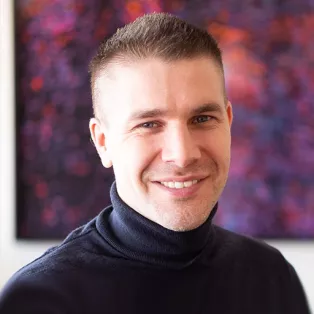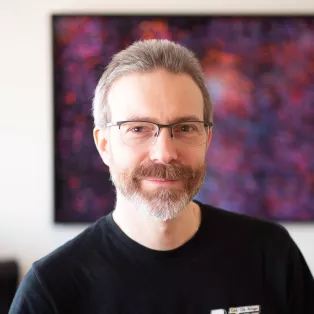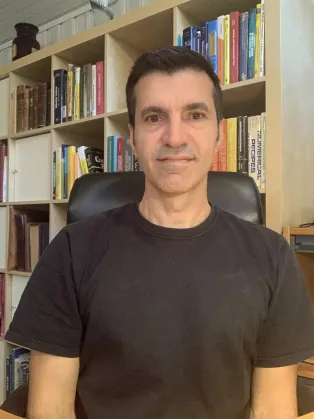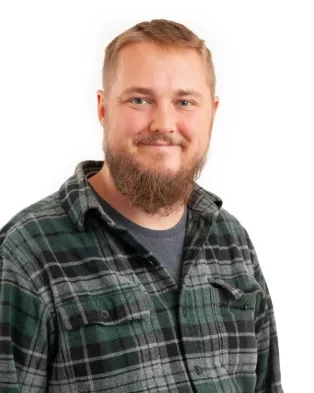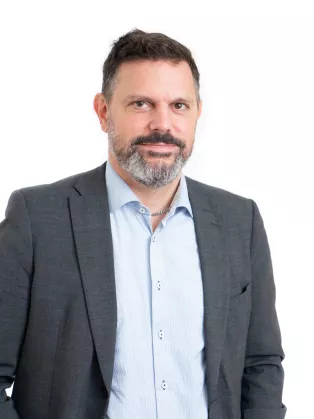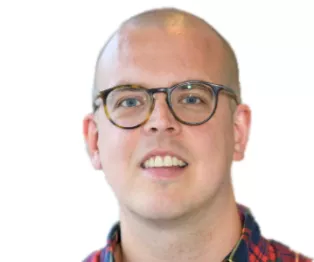Staff
Kajsa M Paulsson, Head of unit/director
CIPA was initiated and is headed by Kajsa M Paulsson. While leading her research group at Experimental Medical Science, Kajsa has in parallel built a reputation and competence in management of Research Infrastructures. She has, for example, been a board member of a number of Swedish and European Research Infrastructures and initiatives. She is also an acknowledged evaluator of Research Infrastructures and has developed organizational models for different types of Research Infrastructures. Having graduated from her Executive Masters in Business Administration (EMBA) focused on Research Infrastructures, Kajsa has a unique tool box for Research Infrastructure work including legal, financial, strategic and organizational issues, each of which are equally important for the development of CIPA.
Contact: kajsa_m [dot] paulsson [at] med [dot] lu [dot] se (kajsa_m[dot]paulsson[at]med[dot]lu[dot]se)
Emanuel Larsson, Coordinator, Tomographic image analysis expert, FoM
Emanuel works as both a Coordinator and Application expert at CIPA, focusing on supporting users with tomographic X-ray and neutron imaging - from acquisition, to image reconstruction, image processing, image analysis, and visualization.
He has extensive experience in leading, planning and carrying out X-ray and neutron imaging projects together with Swedish industry, e.g., on syringes, wound dressings, metals, and food science applications. He has previously been stationed at micro and nano tomography beamlines at Synchrotron facilities, including SYRMEP at Elettra Sincrotrone Trieste (Trieste, Italy), P05 Imaging Beamline at DESY/Hereon (Hamburg, Germany) and ForMAX at MAX IV (Lund, Sweden). This, together with his educational background in Engineering Biology, Devices and Materials in Biomedicine (Linköping University), a Joint PhD in Molecular Physics and Information Engineering (Linköping University and University of Trieste, Italy) and courses in management and economy will help Emanuel guide CIPA to new heights.
Contact: emanuel [dot] larsson [at] med [dot] lu [dot] se
Relevant affiliations:
QIM - Center for Quantification of Imaging Data from MAX IV,
LUNARC - The Centre for Scientific and Technical Computing at Lund University,
4D Imaging Lab at the Division of Solid Mechanics, Lund University,
ForMAX beamline at MAX IV,
ForMAX portal,
Coordinator for the InfraVis Lund node,
Cross-border Ambassador for HALRIC.
CIPA Application Experts
Carl Troein, 2D Spectroscopy analysis expert, FoS
Background: Developing analysis and data processing methods for biological data.
Works with methods such as:
Spatially resolved infrared spectroscopy: imaging of tissues and other structures at 2-10 µm resolution.
Raman spectroscopy: brings out other information than IR absorption spectra.
O-PTIR (optical photothermal infrared): IR absorption spectra at 0.5 µm resolution.
Hyperspectral IR imaging: Images of larger areas at shorter wavelengths.
Applications: Combining and developing steps and tools such as data pre-processing, dimensionality reduction, machine learning classification and graphical user intefaces.
Programming languages: Mainly Python, previously C++, PHP and some MATLAB.
Alexandros Sopasakis, Machine learning applications expert, LTH
Background: Mathematics, stochastic microscopic systems and their interactions. Simulations with Monte Carlo methods - numerical analysis.
Uses the following Machine Learning methods (selection):
LSTMs, TCN, Decision Trees: for time series analysis;
UNets, ResNets, Mask-RCNN, Fast-RCNN, Faster-RCNN: for classification/segmentation;
SIM-CLR, VAEs, GANs: for data generation and anomaly detection.
These methods/competencies/applications can be used for:
- Running massive data requiring both large processor memory or fast parallel processors;
- Forecasting from spatial/temporal or other data;
- instance segmentation and area or volume estimation of bacteria/cells/glomeruli among others;
- super-resolution.
Applications involved in (selection): general image analysis from video/images; MRI instance segmentation & volume computation; time series analysis; feature importance; anomaly detection; data generation; point-clouds; Sentinel-1,2,3 & Copernicus satellite data downloading, cleaning, despecling and analysis.
Programming languages (selection): C, C++, Python, Matlab, Mathematica.
Supercomputer systems experience: Alvis, Google Colab, AWS (limited).
Contact: alexandros [dot] sopasakis [at] math [dot] lth [dot] se
Jonas Ahlstedt, Image analysis and visualization expert, FoM
Background: Physics, medical physics and pre-clinical imaging methods (SPECT/CT, PET/CT etc.), 3D animation and modeling (general)
Uses the following methods (selection):
For analysis (primarily): Fiji (ImageJ), Cell profiler, Nucline, VivoQuant, Arivis, Imaris, 3D slicer and as well as custom scripts and solutions in blender for more complicated 3D analysis
For visualization: blender, PyMOL, chimera and UE5 (Unreal Engine 5), Adobe premiere PRO and Adobe After Effects.
Applications involved in (selection): General image analysis but with a focus on pre-clinical applications such as confocal microscopy (any type of fluorescence microscopy), radionuclide imaging and MRI (segmentation, feature extraction etc.). Visualization of 3D data in VR/AR, 3D-model prepping, rigging and animation for presentation and publication.
Programming languages: Python (blender).
Contact: jonas [dot] ahlstedt [at] med [dot] lu [dot] se (jonas[dot]ahlstedt[at]med[dot]lu[dot]se)
Previous Application Experts
Anders Sjöström, Former CIPA coordinator, processing and HPC expert, LTH
Anders has been working at CIPA since the first year, coordinating the research infrastructure as well as providing expertise in high performance computing, MATLAB usage, research data management and access to LUNARC resources. Since April 2023 Anders has moved on to lead the Hanseatic Science Cloud work package in the Interreg project HALRIC. Anders is still available to CIPA for short consultations.
Contact: anders [dot] sjostrom [at] construction [dot] lth [dot] se (anders[dot]sjostrom[at]construction[dot]lth[dot]se)
Emil Tykesson, CryoEM data analysis expert, FoM
Emil is an organic chemist by training. He has studied a range of human carbohydrate (glycosaminoglycan)-modifing enzymes and his work has covered many aspects of structural biology and enzyme/carbohydrate characterization. In 2020, his team solved the first structure of the human carbohydrate-modifing enzyme dermatan sulfate epimerase 1, known to be upregulated in many types of cancer. Together with his collaborators, he is currently trying to design small molecule inhibitors of the enzyme.
Since 2021, Emil has been employed as a cryo-EM expert, supporting the life science user community in Lund with sample preparation and data analysis, involving a lot of work with SNIC high-performance computing resources.
Contact: emil [dot] tykesson [at] med [dot] lu [dot] se


